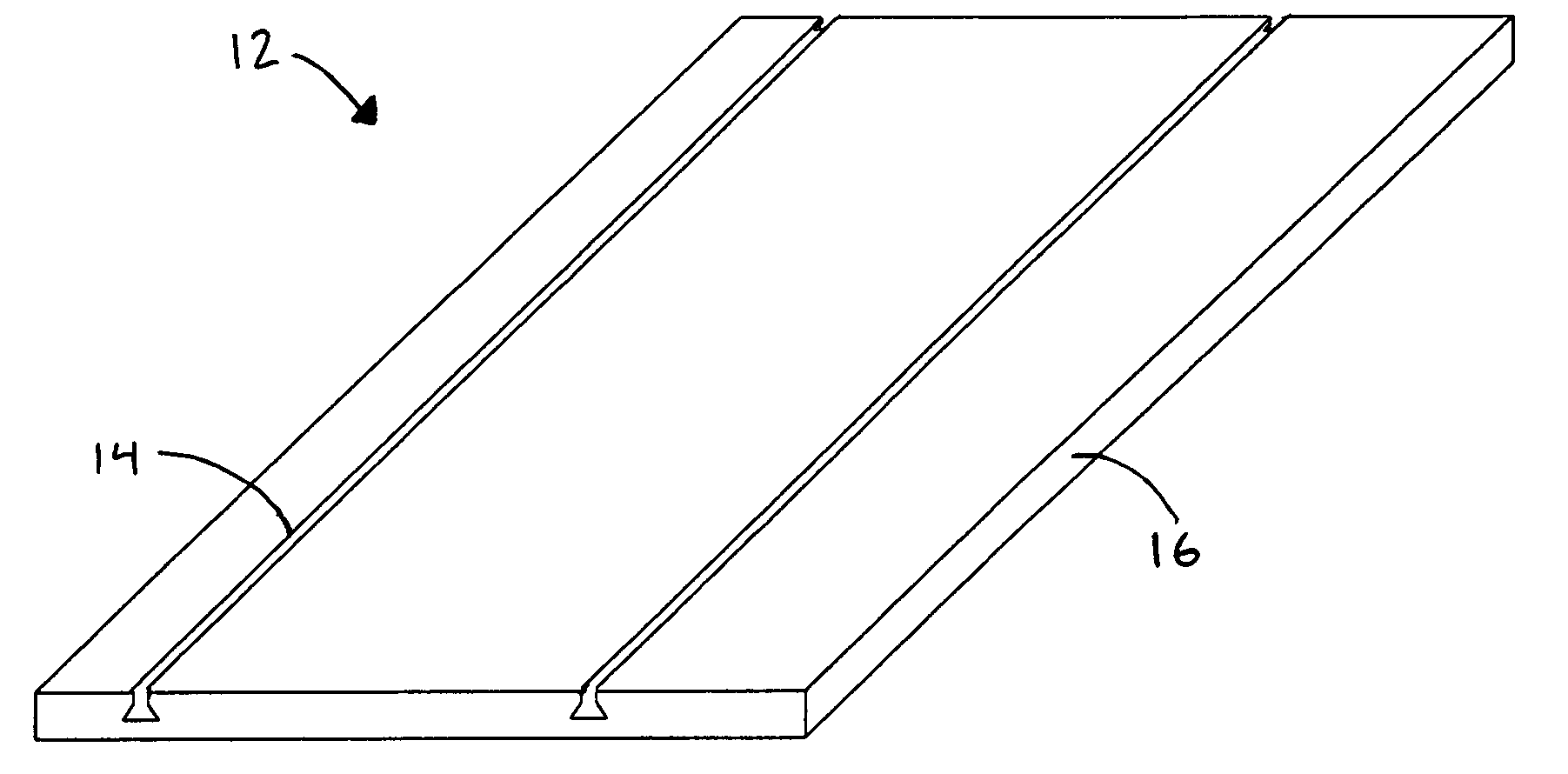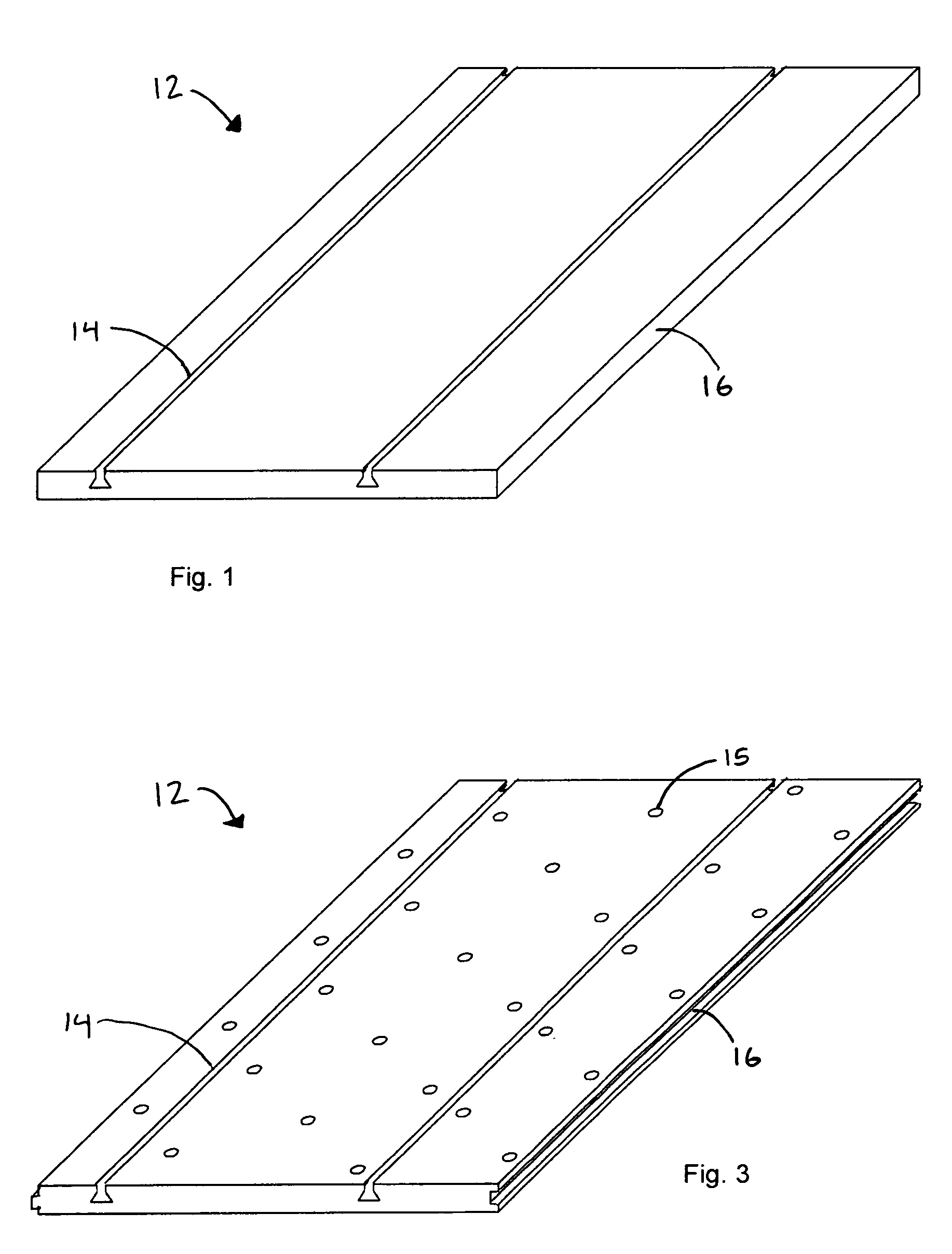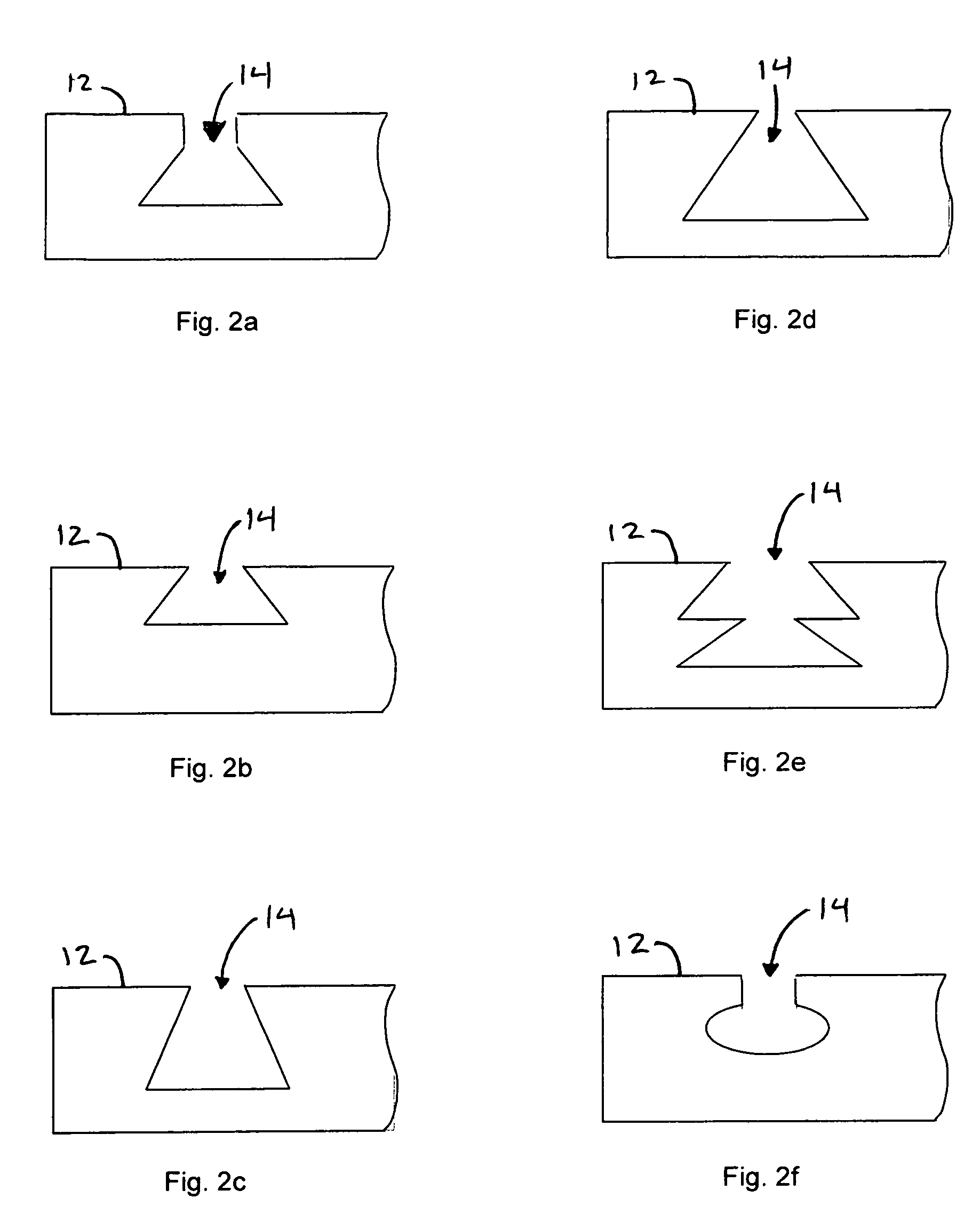Process for making insulated concrete tilt-up walls and resultant product
a technology of insulated concrete and tilt-up walls, which is applied in the direction of walls, ceilings, building repairs, etc., can solve the problems of poor insulation, large thermal mass of concrete walls, and conduct unfortunately rather well, and achieve the effect of rapid casting and assembly, reducing time and labor
- Summary
- Abstract
- Description
- Claims
- Application Information
AI Technical Summary
Benefits of technology
Problems solved by technology
Method used
Image
Examples
Embodiment Construction
[0027]FIGS. 1-12 illustrate a concrete tilt-up wall panel 10 in accordance with the present invention. The exterior walls of a structure are formed by erecting and arranging a plurality of concrete tilt-up wall panels, referred to herein as panels 10, and permanently connecting the panels 10 to each other. A panel 10 comprises concrete 11, which may be any building concrete desired by the builder, and an insulating material 12.
[0028]Insulating Material
[0029]The insulating material 12 is preferably a substantially rigid insulating foam which may be cut with a hot knife and will not be damaged when wet concrete is poured onto it as explained below. Further, the insulating material 12 preferably has an R-value, used in the art to measure resistance to heat flow, of four per inch or higher. Two examples of such material which are known in the art are molded expanded polystyrene (“MEPS”) and extruded expanded polystyrene (“EEPS”). In the present invention, EEPS is preferred due to its hi...
PUM
 Login to View More
Login to View More Abstract
Description
Claims
Application Information
 Login to View More
Login to View More - R&D
- Intellectual Property
- Life Sciences
- Materials
- Tech Scout
- Unparalleled Data Quality
- Higher Quality Content
- 60% Fewer Hallucinations
Browse by: Latest US Patents, China's latest patents, Technical Efficacy Thesaurus, Application Domain, Technology Topic, Popular Technical Reports.
© 2025 PatSnap. All rights reserved.Legal|Privacy policy|Modern Slavery Act Transparency Statement|Sitemap|About US| Contact US: help@patsnap.com



